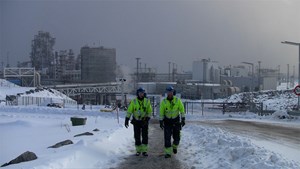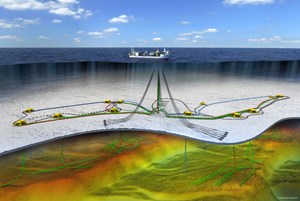The future is in the north, according to the Norwegian Petroleum Directorate

STAVANGER -- Our estimates indicate that more than half of the oil and gas that has not yet been discovered is located in the Barents Sea. The rest is distributed between the Norwegian Sea and the North Sea. The opportunities are greatest in the Barents Sea, where vast areas have not yet been explored.
The numbers tell us that the opportunities on the Norwegian Shelf are still significant, and this provides a basis for oil and gas production for many decades to come.
Two fields are currently producing in the Barents Sea, Snøhvit and Goliat. Goliat was proven in 2000, and production started 16 years later. The oil from Goliat is transported from the field by boat.
At that time, the Snøhvit gas field (proven in 1981) was already in operation. The gas from Snøhvit is routed by pipeline to Melkøya outside Hammerfest, where it is cooled into liquid form (LNG, liquefied natural gas).
The Norwegian Petroleum Directorate presented the report titled Petroleum activity in the High North on 2 April (in Norwegian only). The report places the petroleum activity in the High North into a historical, international and technological framework.
”We hope that the report can contribute in a knowledge-based approach to the debate,” said director general Bente Nyland when she presented the report at the Barents Sea Conference 2019.
Equinor and partners Petoro, Total, Neptune and DEA are already planning for the future. The first thing that will happen is that the Askeladd deposit in the Snøhvit license will commence production.
In late 2018/early 2019 Vår Energi and its partners drilled appraisal well 7122/7-7 S on the Goliat field. It proved oil, and the companies are now looking at the possibility of producing oil from the Goliat facility.
The Alke (7120/12-2) gas and condensate discovery, which was proven in 1981, is operated by Vår Energi. In May 2017, planning for a potential development of this discovery was resumed, and several potential development solutions are being considered.
Johan Castberg is up next
The next field development in the Barents Sea is Johan Castberg.
The Plan for Development and Operation (PDO) for the Johan Castberg oil field was approved in June 2018. According to the plan, the field will start producing in late 2022.
The development concept is a production and storage ship (FPSO) tied to subsea templates with 18 horizontal production wells and 12 injection wells. The oil will be loaded onto shuttle tankers that will transport it to the market.



